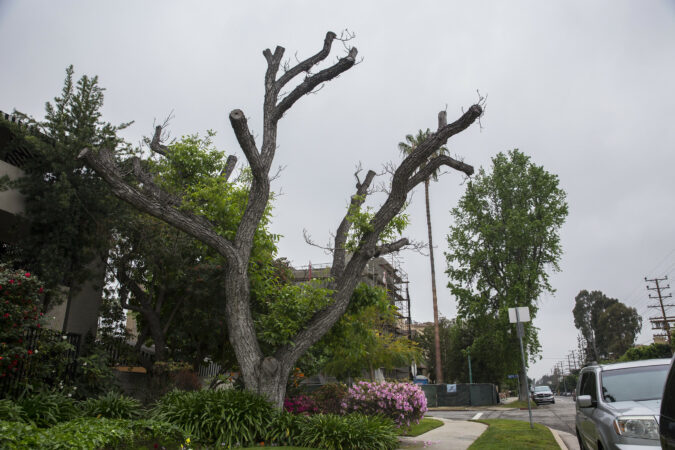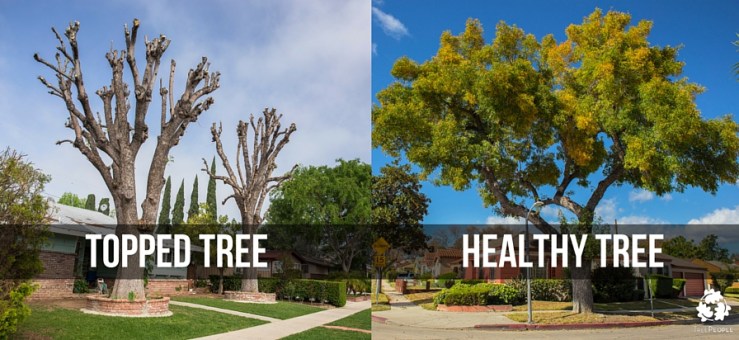This is the second blog in a three part series. Visit part one here and visit us soon to see the third installment.
Have you seen trees like this in your neighborhood?

Tree topping is a pruning practice that could cause long-term damage to your trees. With that in mind, it’s important to know when and how to prune your trees. While it’s important to check your trees yearly, they don’t necessarily need to be pruned each time!
How often should I trim the tree and when?
It is best to prune branches when they are less than 3” thick. During a tree’s first five years, structural pruning can ensure that growing branches have enough space and a strong, secure attachment to the trunk.
Once a tree’s structure is set, the only pruning that should be done is to remove “The Four D’s.”
- Dead: Not sure if a branch is dead or alive? Scratch the bark. If it’s green underneath, it’s alive.
- Diseased
- Damaged
- Deranged: In other words, a branch that is grown out of place, has co-dominant stems, crossing or rubbing branches, or branches growing toward the center of the tree.
Periodic maintenance allows for healthy growth and the space needed to live up to its full potential.
How much should be trimmed?
It’s important to remember that any cut creates a wound! That’s why it’s important to be thoughtful and remove only what is needed. Less is better! ALL dead or diseased wood should be removed. Otherwise, follow these guidelines:
- For a young tree, no more than 25% of the tree’s live wood should be removed each year.
- For a mature tree, no more than 20% of the tree’s live wood should be removed each year.
This brings us to yet other harmful practices called lacing or thinning. This common, yet dangerous practice starves a tree–giving it less leaves, and therefore less ability to create energy. It is a myth that thinning a tree out allows the wind to go through it, thus making it less susceptible to wind damage. The opposite is true! Over-thinning allows wind to hit every branch.
Also, be on the lookout for lion-tailing. Lion-tailing removes the inside branches and leaves, leaving the majority of foliage on the ends of branches. The result is more branches breaking, wind or no wind.
And remember to never prune a stressed tree–especially a drought-stressed tree. Make sure your trees are well-watered and healthy looking before removing any live wood. (On the other hand, dead and diseased wood can always be removed.)
Tree pruning should be a careful process– never a quick, cheap routine. The best way to protect your trees is by hiring an ISA Certified arborist. In our next post, we’ll cover tips on how to hire a top-notch crew.
Want to learn more about caring for trees? Visit our YouTube channel for step-by-step videos and tutorials!

